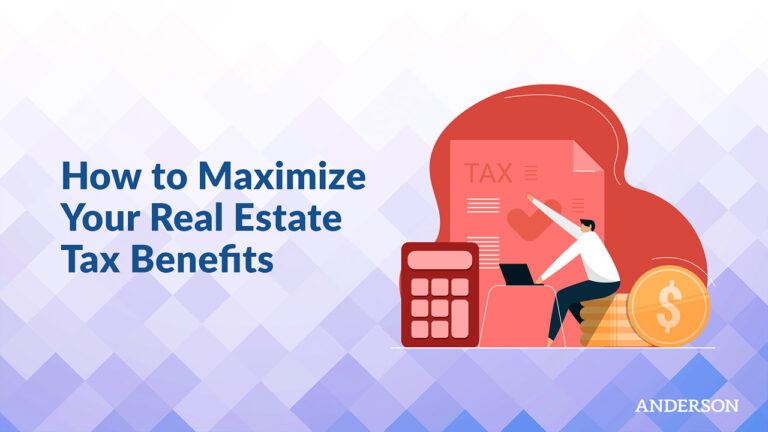Sometimes assets appreciate in value, and sometimes they depreciate. When this happens, a business owner can write the depreciation off against their income. But if they sell the asset, Uncle Sam is going to recapture part of that depreciation.
Frequently Asked Questions About Depreciation Recapture
1. What is Depreciation Recapture?
2. How Does Recapture of Depreciation Work?
3. How is Depreciation Recapture Taxed?
4. How is Depreciation Recapture Calculated?
5. What Assets Are Subject to Depreciation Recapture?
6. Can you Avoid Depreciation Recapture Taxes?
7. How Much Can You Depreciate Yearly?
Depreciation recapture is not just a concept for tax professionals to worry about. The nuances and tax implications are an important consideration for any real estate investor or business owner. This is because a property owner who makes the accounting choice to depreciate property from its original fair market value is enjoying a great annual tax deduction that they will eventually need to pay back in the form of a recapture tax. As they say: all good things must come to an end—and that includes the tax benefits of depreciable property.
One could say that the purpose of applying an ordinary tax income rate to the sale of investment property (plus, in some instances, capital gains taxes) is to help the Internal Revenue Service recoup a portion of the taxable income they did not initially receive because of a depreciation deduction applied to gross income. A depreciation recapture tax is the remedy the internal revenue code uses to offset some of its losses and ensure the government gets paid.
As we answer some of these frequently asked questions, keep in mind that depreciation recapture doesn’t just apply to investments and business property; it applies to personal property as well. For most individuals, the only applicable case of depreciation recapture will only occur when they sell their personal residence.
Frequently Asked Questions About Depreciation Recapture
1. What is Depreciation Recapture?
Depreciation recapture allows the IRS to collect taxes on the sale of an asset that a business had previously used to offset its taxable income through wear, tear, and operating expenses. If that sounds complicated, it is—but we’ll provide examples later.
As mentioned, it does also apply to personal property. However, writing off the depreciation of property that isn’t real property usually only applies to a business that has assets with operational expenses.
2. How Does Recapture of Depreciation Work?
Monetary gain from the sale of said asset will be taxed as ordinary income, so the exact rate will depend on the income of the business. In most cases, the taxable amount is less than you might expect because the asset has depreciated over the years (think of machinery or a vehicle).
In some cases, however, the market value of the asset may have appreciated (think real estate or collectibles), even though it carried operating expenses. In these cases, the accumulated depreciation that was written off is taxed as income, and any profitable gain beyond that is taxed at the capital gains rate.
3. How is Depreciation Recapture Taxed?
The exact amount of taxes to be paid on depreciation recapture will depend on a few factors, including the cost basis, the adjusted cost basis, the gross annual income of the business itself (which determines its tax bracket) and whether or not the sale of the asset resulted in any profit beyond the original cost basis (which would be subjected to capital gains taxation).
As you can see, there are a number of moving factors that make this question difficult to answer with a one size fits all approach. The taxation will also depend on the type of asset in question, and whether it is real property (land and improvements) or pecuniary property (like machinery or vehicles).
Free Strategy Session with an Anderson Advisor
Receive a detailed risk assessment to assist in lowering problem areas that could wipe out all of your assets with one wrong move. Speak with an Anderson Professional Advisor to get your FREE Strategy Session.
Limited-Time Offer: ($750 value.)
4. How is Depreciation Recapture Calculated?
The first thing that must be established is the original cost basis of the item. The next piece of requisite information is the annual depreciation. There are a number of ways to calculate this, but one of the most common ways is the straight line method. This basically takes the original cost of the asset, it’s value at the end of its usable life, and then divides that dollar amount by the number of years it will be in service. The end number is going to be the accumulated depreciation of the asset.
If the asset is sold for a profit, that profit is calculated by examining its adjusted cost basis (basically its value at the time of the sale, according to its depreciation, not its value at the time of its purchase) and subtracting that from the dollar amount of the sale to find its realized gain.
Between the realized gain and the accumulated depreciation, the taxes for depreciation recapture are applied to the smaller dollar amount. If, however, the asset was sold for more than it was purchased, the entirety of the depreciation is recaptured and then the profit is taxed at the capital gains rate.
5. What Assets Are Subject to Depreciation Recapture?
Any capital asset held for more than one year can be considered a depreciable asset under Section 1231 of the IRS code, and is referred to as 1231 property. This then branches out into Section 1245 (capital property that is not real estate or improvements on real estate) and Section 1250 (real property and land).
In case you’re wondering, assets like stocks, bonds, mutual funds, commodities, and precious metals are not subject to depreciation recapture because they have no operating expenses, or their operating expenses are negligible and in no way impact the cost basis of the asset. By contrast, machinery does experience wear and tear that reduces its market value and usefulness, so the real property is subject to maintenance expenses.

6. Can you Avoid Depreciation Recapture Taxes?
Yes, you most certainly can! You need to perform something called a 1031 exchange, which allows you to take the proceeds from the sale of an asset and roll them into a similar asset.
A 1031 exchange could be used in former times for a wider range of asset classes, but with the passing of the Tax Cuts and Jobs Act (TCJA), only real property can be subject to a 1031 exchange at this time.
7. How Much Can You Depreciate Yearly?
Again, the straight line formula is the most common method for calculating depreciation. This involves taking the cost basis of the asset at its time of purchase, and subtracting that from the adjusted cost basis of the asset at the end of its useful life. Then you take the number of years that the asset can functionally serve your business and divide the dollar amount of the cost basis minus the adjusted cost basis by this number (of years). This will give you the dollar amount you can claim as depreciation per year using the straight line method.
As it turns out, though, you do not have to always use the straight line method. Under the umbrella of Generally Accepted Accounting Principles (GAAP), there are three other methods for calculating depreciation: declining balance, sum-of-the-years’ digits, and units of production.
The declining balance depreciation method (also referred to as accelerated depreciation) depreciates fixed assets at an accelerated rate in the early years of their usage, while slowing down the depreciation toward the end of the item’s useful life. This type of depreciation calculation is useful for items that quickly become obsolete, like tech hardware.
The sum-of-the-years’ digits depreciation calculation is sort of in-between the straight line method and the declining balance method. SYD, as it’s also called, takes the number of years of the item’s expected useful life and then makes it factorial to obtain further percentages.
To explain, let’s take a piece of machinery with a five-year lifespan. The SYD method would suggest adding 5 + 4 +3 +2 +1 to get 15. Each number that went into the equation would then be divided by this factorial result to get the percentage that should be taken away in that yea, resulting in 33 percent, 27 percent, 20 percent, 13 percent, and finally 7 percent—meaning that in its first year of use, 33 percent of the cost basis should depreciate. Similar to declining balance, SYD is useful for assets that quickly depreciate.
Unit of production depreciation assigns an equal amount of maintenance costs to every unit produced, along with historical costs, salvage costs, and the accounting period determined by the accountant, whether that’s a calendar year(s) or fiscal year(s). This method of depreciation is typically used for companies with an assembly line, such as a manufacturer.
Examples of Depreciation Recapture
Section 1245 Calculation Example
Let’s take a look at a Section 1245 item first. Remember that Section 1245 describes capital property that is not real estate or improvements on real estate—such as machinery, vehicles, or tech equipment. For the sake of simplicity, we’ll use the straight line depreciation method in our example.
Suppose the item is a $25,000 John Deere tractor with a 15-year lifespan and a salvage cost of $5,000 on the secondhand market. This means the item will depreciate approximately $1,333 per year. The cost basis is $25,000 and the adjusted cost basis (if sold) would be $5,000.
But let’s say the owner of this John Deere tractor is able to fix it up a bit and sell it on eBay for $7,500, making a profitable gain of $2,500. Remember, for the purpose of calculating depreciation recapture, the gain is calculated using the current cost of the adjusted cost basis, not the original cost. Yes, this farmer has essentially spent $17,500, but that calculation is irrelevant here. The realized gain from this sale ($2,500) is compared to the accumulated depreciation, which in this case is $20,000.
Thankfully, the IRS applies depreciation recapture to the lower of the two numbers. So in this case it would be the $2,500 profit, which is taxed at the farmer’s income tax rate when Old MacDonald prepares his tax return. Hopefully, he is working with an accountant who knows how to write off business expenses.
Section 1250 Calculation Example
Now let’s take a look at a Section 1250 item, which refers to real property, like land and landed improvements (a building or landscaping features). In our previous example, we said we would use the straight line method for simplicity, but in this case we are compelled to because the IRS has decreed that all real estate post-1986 must have its depreciation calculated using the straight line method. More specifically, they request that residential real estate depreciate at 3.636% annually over the course of 27.5 years.
There is a whole table of different depreciation rates for different types of real estate, ranging from a 10-year depreciation of an electric smart grid to a 39-year depreciation of a non-residential building, like an office or warehouse. In our example, we’ll keep it simple and use the 27.5 figure that applies to any building where 80 percent of the cash flow is derived from dwelling units. Note that only improvements can depreciate, but land can never depreciate. Moreover, it’s important to note that you can break down the entirety of the asset into parts, some of which depreciate faster, through cost segregation for residential real estate.
In the case of a property, when the asset is sold, the seller is most likely going to realize a profit— not only on top of the adjusted cost basis, but on top of the original cost basis (that is, the price when they bought it). We’ll see that built into our example and its tax implications.
So, let’s take a duplex that an investor purchased for $300,000, which will depreciate at a rate of $10,909 per year according to the straight line depreciation method. Let’s say that after 20 years, the investor decides to sell the property and roll the proceeds into a larger eight-unit apartment complex through a 1031 exchange. Let’s say the market is hot, and the investor was able to sell the property for $450,000; seemingly a $150,000 gain. However, the realized gain is going to be a lower number taking into account its deprecation.
At this point, the adjusted cost basis of the property will be calculated using its original purchase, price minus the accumulated depreciation. That ends up being $300,000 – ($10,909 x 20) = $81,820. Remember that unlike machinery, real estate does not necessarily decrease its usefulness (in fact, rents always increase), but it does have maintenance costs, like property management and repairing wear and tear, so that depreciation reflects these costs. The realized gain from this sale will be the sale price minus the adjusted cost basis, or $450,000 – $81,820 = $368,180.
The realized gain is then compared to the accumulated depreciation and that the IRS takes the lower of the two numbers into account. So, between $218,180 (the accumulated depreciation over twenty years) and $368,180 (the realized gain) the depreciation recapture will be applied to $218,180. The tax rate will be tied to the investor’s tax bracket—however, that rate cannot exceed 25 percent.
But wait, there’s more! The capital gain on the property (that is, the realized gain minus the accumulated depreciation or in this case $368,180 – $218,180 = $150,000) will be taxed at the capital gains rate of 15 percent or 20 percent (since long term capital gains tax is applicable here), depending on the tax bracket of the investor. If you’re wondering what that all comes out to, let’s say the investor is taxed at the highest rates based on their income. The 25 percent cap will be applied to $218,180 for $54,545 and the 20 percent capital gains rate will hit the $150,000 for a total of $30,000. Putting those two amounts together, this investor is looking at a tax bill of $84,545, which certainly halves their six-figure profit.
If this is the case, it would behoove this investor to schedule their free tax plan strategy session with one of our tax experts to find ways to reduce this tax burden.
Can I Avoid Depreciation Recapture?
Yes indeed, you most certainly can. A few times we have mentioned the wonderful tax vehicle of the 1031 exchange, which allows you to defer depreciation recapture by rolling the proceeds of an asset’s sale into another like property. However, as we have also mentioned, the TCJA has narrowed this option down to real property. Whether future legislation overturns this change has yet to be seen, but for the time being, business owners have to explore other ways of avoiding depreciation recapture.
One way is to sell the asset for a loss. Of course, with an asset that depreciates over time, you may be wondering what that entails, since you’re technically selling it at a loss anyway. What this means is that you will have to sell the asset below its book value; that is, the fair market value of the asset as-is, with all its wear, tear, and usage. If you do this, you might feel like you are losing money that you could reclaim, but you might also be avoiding depreciation recapture tax as well.
Whether or not this makes sense financially will depend on several factors, so it’s beneficial to parse this out with an accountant to see if it makes sense to sell an asset at a “loss” or to eat the depreciation recapture tax.
Tangentially, it’s areas like this where many business owners are losing nickels and dimes that snowball into significant amounts over time. You may not think that paying depreciation recapture on a set of office computers or selling them below their value really matters, but what if you’re looking at a fleet of trucks? It’s a good idea to get into the mindset of working with real numbers to see the tax implications and possible benefits.
Additionally, there may be ways to avoid depreciation recapture by gifting the asset in question.
Depreciation Recapture is Complicated, So It’s Important to Create a Plan
If you’re still a bit confused about depreciation recapture, don’t worry, you’re not alone. It’s a complicated tax issue that has a number of nuances—everything from the type of asset, your tax bracket, and the useful lifespan of the asset in question can have different tax implications.
You don’t need to know everything, but it’s good to know some of the basics—mainly that when you write off the depreciation of an asset or liquidate it, the IRS will recapture some of that write off in the form of depreciation recapture.
If your business or real estate investment is dealing with depreciation recapture taxes, it’s a smart idea to work with a tax expert to create a plan for reducing your tax liabilities. A great first step toward doing so would be to sign up for our Tax and Asset Protection Workshop. Not only will you learn how to utilize tried and true tax strategies to save money, but we’ll also help you create a plan to protect your assets for many years to come. Don’t leave your investments at risk any longer—sign up today!
Bonus Video
Free Strategy Session with an Anderson Advisor
Receive a detailed risk assessment to assist in lowering problem areas that could wipe out all of your assets with one wrong move. Speak with an Anderson Professional Advisor to get your FREE Strategy Session.
Limited-Time Offer: ($750 value.)











